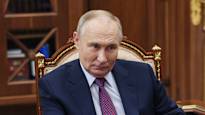Russia’s leadership lowered the threshold for using a nuclear weapon in the doctrine in order to incite a feeling of uncertainty, assesses Russia correspondent Heikki Heiskanen.
Heikki HeiskanenRussia correspondent
MOSCOW On the same day as the President of Russia Vladimir Putin signed the country’s new nuclear weapons doctrine, Ukraine was reported to have struck the Bryansk region with US ATACMS missiles.
The timing of the signing was hardly a coincidence. On Sunday, the US media reported that President Joe Biden had given Ukraine permission to launch ATACMS missiles on Russian territory.
Russia’s new doctrine lowers the threshold for using nuclear weapons. Section 11 of the Nuclear Weapons Doctrine specifies that aggression by a non-nuclear weapon state with the support of a nuclear weapon state can be a reason to resort to nuclear weapons.
This is, of course, a direct reference to a nuclear-weapon-free Ukraine, which is supported by the nuclear powers the United States, Britain and France.
Previously, in the doctrine, Russia reserved for itself the right to use a nuclear weapon if the state’s existence is threatened. Now the formulation is that a critical threat against the state’s right to self-determination and/or territorial integrity is sufficient.
The question is, of course, when the threat is critical.
With the change in the nuclear doctrine, the Russian leadership incites uncertainty. The formulations leave more and more room for interpretation in which situation Russia could resort to a nuclear weapon.
Most obviously, the intention of the Russian leadership is that Ukraine – and its Western backers – will have to think seriously about the danger of a nuclear weapon every time Ukraine prepares new missile strikes on Russian territory.
The nuclear weapon is Russia’s trump card, because the Western powers simply cannot acknowledge such a high risk with a mere shrug – no matter how much they consider Putin’s nuclear weapon references a bluff. It has contributed to the delay of Western arms deliveries to Ukraine.
It’s hard to see right nowthat Russia would really need to use a nuclear weapon in its war against Ukraine.
Recently, Russia has been in the thick of the battles, while the Ukrainian armed forces are suffering from a serious manpower shortage. In the West, more and more talk has already started to appear that Ukraine may be forced to cede territories to end the war.
The situation seems to be slowly moving in the direction the Russian leadership wants, and the ATACMS missiles are not turning that direction yet.
However, the Russian authorities may be tempted to further escalate tensions as if to say goodbye to Joe Biden before Donald Trump’s rise to power in the United States.
